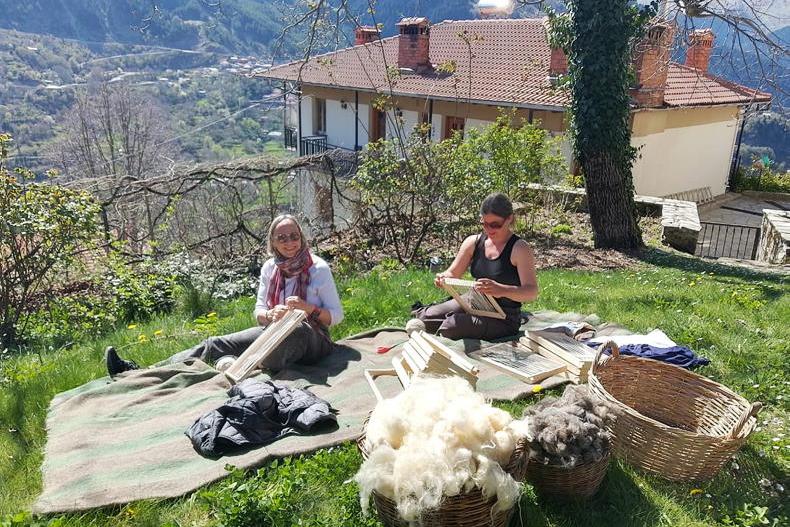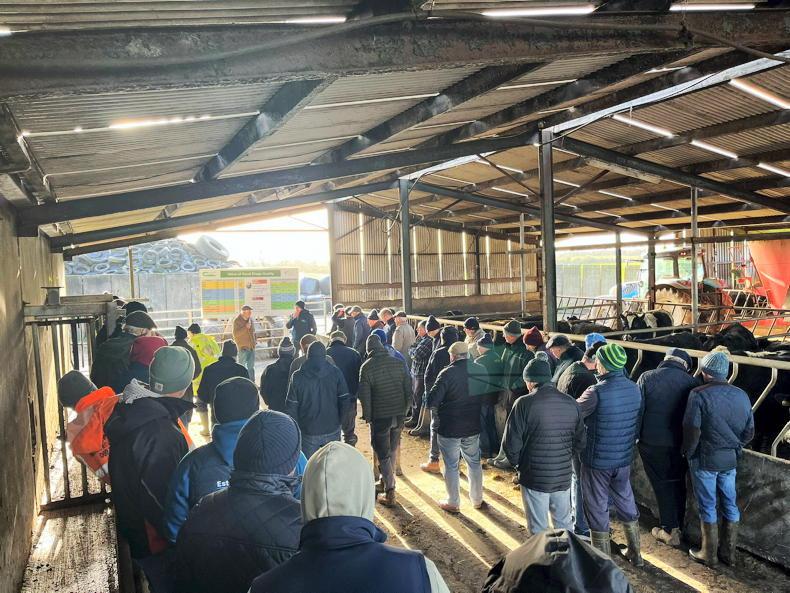This week, more than 2,500 farmers attended the open day on our beef and sheep demonstration farm in Tullamore, Co Offlay.
The farm was established five years ago by the Irish Farmers Journal to showcase the potential for the implementation of best practice technologies to drive profitability within a commercial farm setting.
We have seen many question the economic contribution of the suckler and sheep sectors to the rural economy on the basis of low income levels. Converting land under suckling to forestry is often put forward as a more viable land use – both in terms of economic and environmental sustainability.
However, at the open day, Adam Woods presented figures showing that the mixed suckler and sheep enterprise delivered a gross margin of over €1,300/ha in 2021.
Net profit
As detailed on page 14, when typical fixed costs are layered into the system alongside a basic payment of €286/ha, the net profit figure for the farm system was shown to be just under €1,000/ha.
One of the key messages to farmers was that it was possible to achieve this high level of economic efficiency while also improving the environmental sustainability of the farm.
In recent years, the farm has focused on reducing chemical nitrogen use, increasing clover content in swards, making better use of farmyard manures, driving breeding technologies to further improve animal performance and continuing with a highly efficient young bull beef system.

Irish Farmers Journal editor Justin McCarthy being interviewed by RTÉ at the Tullamore Farm open day this week. \ Philip Doyle
All of these technologies were shown to deliver a double dividend to the business – both in terms of economic and environmental suitability.
In addition, the soil on the farm has also been measured for carbon – not only to establish a baseline level but also to measure the level of carbon sequestered from the atmosphere over the coming years. At this point, the soil on the 80ha block holds carbon stocks equivalent to the combined emissions of 1,000 cars per annum.

Siobhán Walsh told farmers that the plan for the farm over the next 10 years is to try to increase these carbon stocks to a level equivalent to the emissions of 3,000 cars per annum. This would be achieved using the livestock on the farm to improve soil organic matter.
Climate debate
Of course, for many farmers, the reality of what was taking place on Tullamore Farm and indeed on many farms across the country was a far cry from how their sector has been positioned within the climate debate. The level of frustration at this divide was clearly evident throughout the day.
Ultimately, what Tullamore Farm shows is that with the right policy framework and with realistic targets, farmers cannot just respond to the challenge of reducing national emissions but also the global challenge of feeding a rising population while reducing the environmental footprint of food production.
Setting idealistic targets for the sector and rolling out quick-fix policies will not achieve this. Climate targets for the sector need to be deliverable without undermining the economic viability of the family farm. It is not possible for any business to invest in going green if policy measures force it into the red. If targets are set at a level that make farms unviable, then access to the necessary finance to invest in emission-reduction technologies will not be possible and the necessary changes won’t be achieved.
Financial impact
As detailed on page 20-21, the results of the KPMG report commissioned by the Irish Farmers Journal shows that a 30% emission reduction target would result in such a scenario. Even at the lower end of the reduction range, the financial impact would be such that Government could not credibly implement a reduction target for the sector without coming forward with a clear financial and policy plan as to how farmers were going to be supported in delivering it.
In many ways, the focus and debate around setting an emission reduction target is a distraction; targets don’t deliver results. Where the debate should be is on the Government’s plan to reduce the environmental footprint of producing food in Ireland and how farmers are going to be supported in doing this. It is by doing this, not having debates around where targets should be set, that results will be delivered.
Ultimately, one of the key messages from the Tullamore Farm open day was that suckler and sheep farming have a brighter future than is often perceived. However, for this to be realised, Government must come forward with proper policies and realistic targets that improve environmental sustainability while protecting economic viability.
This week, more than 2,500 farmers attended the open day on our beef and sheep demonstration farm in Tullamore, Co Offlay.
The farm was established five years ago by the Irish Farmers Journal to showcase the potential for the implementation of best practice technologies to drive profitability within a commercial farm setting.
We have seen many question the economic contribution of the suckler and sheep sectors to the rural economy on the basis of low income levels. Converting land under suckling to forestry is often put forward as a more viable land use – both in terms of economic and environmental sustainability.
However, at the open day, Adam Woods presented figures showing that the mixed suckler and sheep enterprise delivered a gross margin of over €1,300/ha in 2021.
Net profit
As detailed on page 14, when typical fixed costs are layered into the system alongside a basic payment of €286/ha, the net profit figure for the farm system was shown to be just under €1,000/ha.
One of the key messages to farmers was that it was possible to achieve this high level of economic efficiency while also improving the environmental sustainability of the farm.
In recent years, the farm has focused on reducing chemical nitrogen use, increasing clover content in swards, making better use of farmyard manures, driving breeding technologies to further improve animal performance and continuing with a highly efficient young bull beef system.

Irish Farmers Journal editor Justin McCarthy being interviewed by RTÉ at the Tullamore Farm open day this week. \ Philip Doyle
All of these technologies were shown to deliver a double dividend to the business – both in terms of economic and environmental suitability.
In addition, the soil on the farm has also been measured for carbon – not only to establish a baseline level but also to measure the level of carbon sequestered from the atmosphere over the coming years. At this point, the soil on the 80ha block holds carbon stocks equivalent to the combined emissions of 1,000 cars per annum.

Siobhán Walsh told farmers that the plan for the farm over the next 10 years is to try to increase these carbon stocks to a level equivalent to the emissions of 3,000 cars per annum. This would be achieved using the livestock on the farm to improve soil organic matter.
Climate debate
Of course, for many farmers, the reality of what was taking place on Tullamore Farm and indeed on many farms across the country was a far cry from how their sector has been positioned within the climate debate. The level of frustration at this divide was clearly evident throughout the day.
Ultimately, what Tullamore Farm shows is that with the right policy framework and with realistic targets, farmers cannot just respond to the challenge of reducing national emissions but also the global challenge of feeding a rising population while reducing the environmental footprint of food production.
Setting idealistic targets for the sector and rolling out quick-fix policies will not achieve this. Climate targets for the sector need to be deliverable without undermining the economic viability of the family farm. It is not possible for any business to invest in going green if policy measures force it into the red. If targets are set at a level that make farms unviable, then access to the necessary finance to invest in emission-reduction technologies will not be possible and the necessary changes won’t be achieved.
Financial impact
As detailed on page 20-21, the results of the KPMG report commissioned by the Irish Farmers Journal shows that a 30% emission reduction target would result in such a scenario. Even at the lower end of the reduction range, the financial impact would be such that Government could not credibly implement a reduction target for the sector without coming forward with a clear financial and policy plan as to how farmers were going to be supported in delivering it.
In many ways, the focus and debate around setting an emission reduction target is a distraction; targets don’t deliver results. Where the debate should be is on the Government’s plan to reduce the environmental footprint of producing food in Ireland and how farmers are going to be supported in doing this. It is by doing this, not having debates around where targets should be set, that results will be delivered.
Ultimately, one of the key messages from the Tullamore Farm open day was that suckler and sheep farming have a brighter future than is often perceived. However, for this to be realised, Government must come forward with proper policies and realistic targets that improve environmental sustainability while protecting economic viability.














SHARING OPTIONS